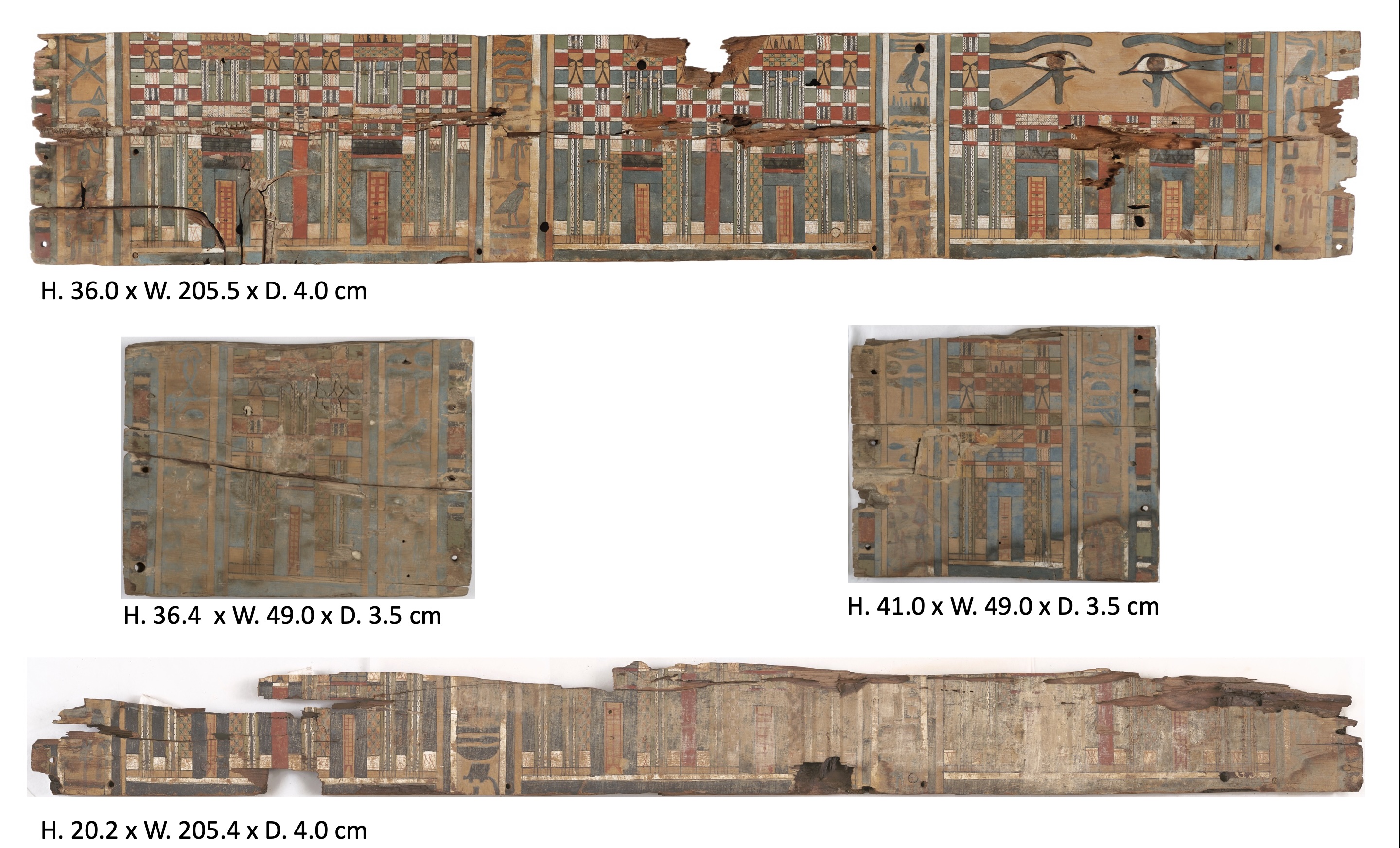

Object number: E.67.1903
Description: Four panels from an outer coffin, box-shaped, made of painted wood belonging to a man named Heta-User (or User-Heta) from Beni Hasan, Middle Egypt. The coffin dates to the 12th Dynasty, Middle Kingdom (around 1938 - 1756 BC). The coffin is missing the lid and the base; only the sides are present, all with the uppermost part missing, including the horizontal text lines. Most of the dowels are missing. The short sides are fairly intact, each made of two planks, joined by two long dowels which survive. The front is full-length and almost complete, only a short upper section is missing.
The name of the current owner of the coffin represents a modification of the coffin. The original owner’s name was Hornefer, but this name was removed and replaced with Heta-User’s name (and title in some places).
The coffin also appears to have been made from re-used wood. See Commentary below.
Measurements: Front: l. 205.5 cm w. 36 cm d. 4 cm; Back: l. 205.4 cm w. 20.2 cm d. 4 cm; P.l. end board: l. 49 cm w. 41 cm d. 3.5 cm; P.r. end bord: l. 49 cm w. 36.4 cm d. 3.5 cm
Analysis: The front panel is made of a single, wide plank, which shows severe termite damage around both ends. Termite channels also run lengthwise along the middle section. Rot is visible in the same area. Of the back of the coffin, only part of the lower plank survives, again with severe termite damage.
The paint layers are mostly in very good condition. Some areas have suffered water damage (e.g., the lower edge of the p.l end), but there is very little paint loss which is not associated with damage to the wood. There is little or no ground underneath most of the paint, with the exception of old holes that have been filled with a thick paste. This paint is water-damaged in areas and is poorly bound. It is also very vulnerable to loss from contact.
Pigments were examined with XRF. Preliminary results show a limited palette with Egyptian blue, (probable) Egyptian green, red earth and a yellow earth, occasionally mixed with calcite to alter the hue. The final outlining is carried out in carbon black.
Commentary:
Detailed examination of the structure of the coffin indicates that it was made from panels of cedar wood, orginally from another large object, that were originally approximately twice as thick as they are now and have been sawn through. The original object may well have been a door. For further information about this, see the report prepared by Julie Dawson.

Panels from the coffin of Heta-User